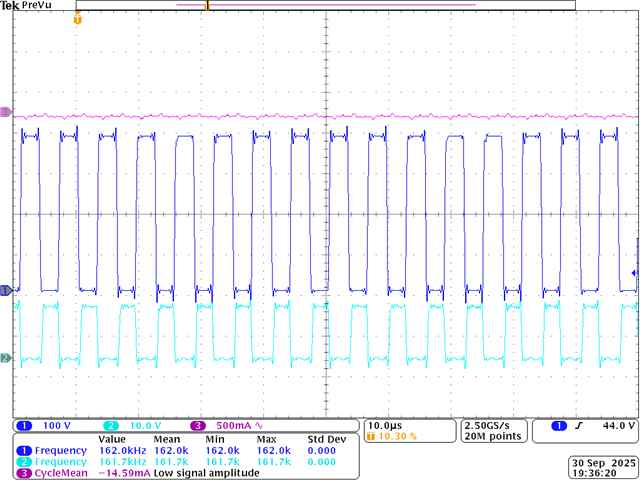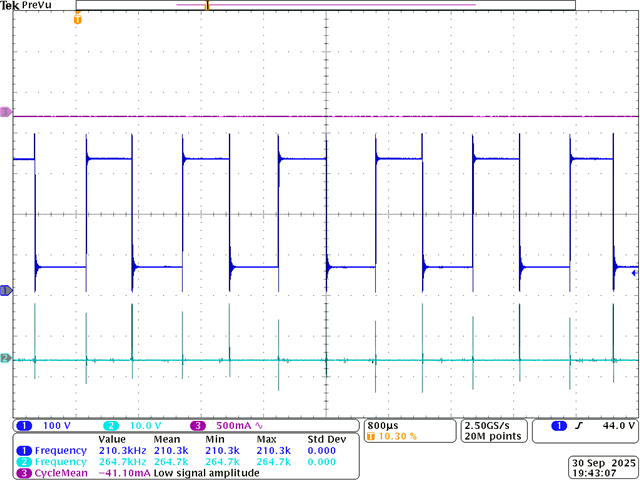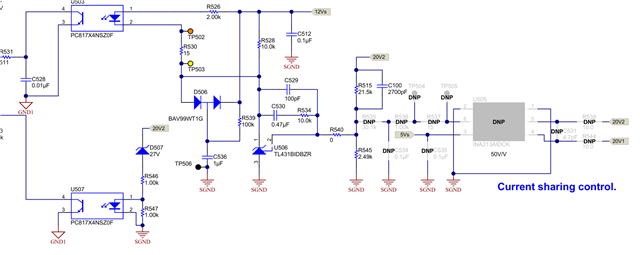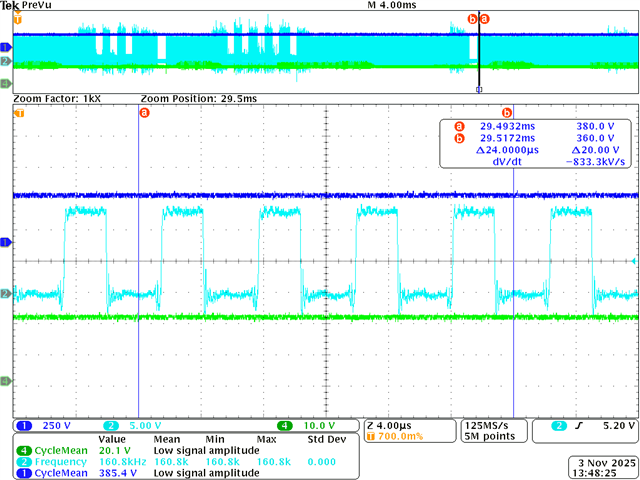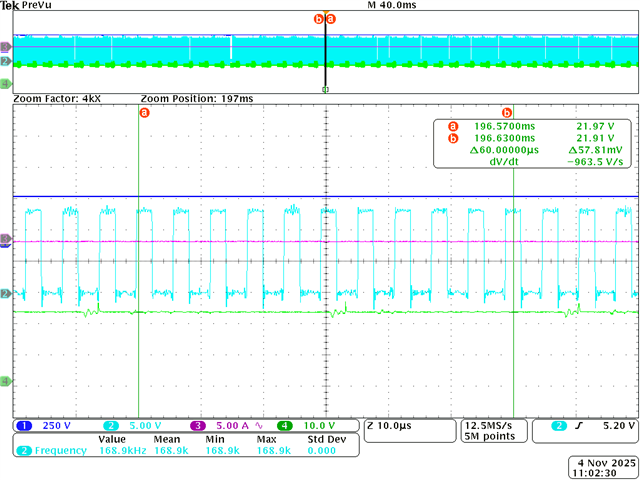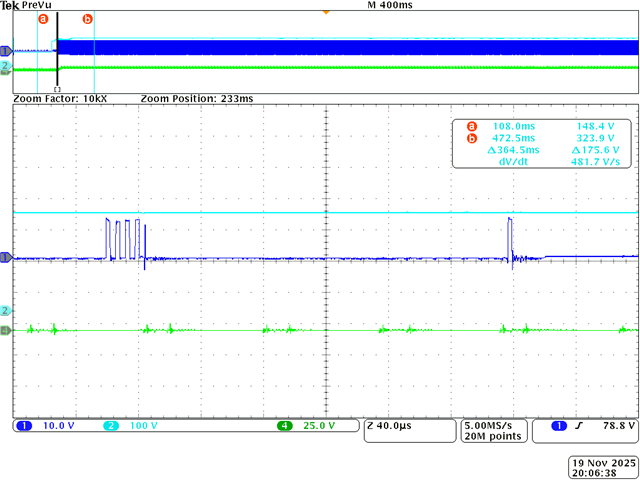Other Parts Discussed in Thread: TL431, UCC25600
Tool/software:
Dear TI Team,
I am working on the reference design PMP11282 Rev A, which is implemented on the PMP11064 Rev B PCB. I am currently facing an issue with the LLC IC UCC25600D, where it is not regulating properly at startup.
For testing, I am applying an input voltage of 80–90 VAC, 50 Hz.
The LLC half-bridge resonant converter is designed for a 24 V regulated output, but I observe that the output initially rises to 32 VDC and then gradually reduces back to 24 VDC. At this stage, only the output capacitors are connected, and no load is applied.
-
Blue signal: Output voltage (~375 VDC)
-
Yellow signal: Output voltage (initially 32 V, gradually reducing to 24 V)
Could you please confirm how much minimum load is required for stable regulation? Also, I would appreciate your guidance on how this issue can be resolved.
Please find the schematic and DSO waveform photo attached for reference.
Best regards,
Anand Matta



